#12 SC Cable
Explore tagged Tumblr posts
Text
Advantages of a 12-core fiber optic cable

A 12 Fiber Cable is a type of optical cable that has 12 separate strands or cores of optical fibers enclosed in a protective jacket. Each core may carry a distinct communication signal, allowing numerous data streams to be delivered concurrently.
Fiber optic cables are composed of tiny strands of glass or plastic fibers that transport data via light pulses. These cables provide various advantages over regular copper cables, such as increased bandwidth, quicker data transmission rates, and greater transmission distances.
The 12-core design is a common choice for fiber optic cables because it strikes an appropriate balance between capacity and cost.
It supports the transmission of numerous signals, making it ideal for applications requiring large data capacity, such as telecommunications networks, data centers, and internet service providers.
In recent years, there has been an increase in demand for larger-capacity fiber optic connections to meet contemporary technology's expanding data requirements. As a result, manufacturers have created cables with even greater core counts, such as 24, 48, or 96 cores. These higher-core-count cables are commonly employed in large-scale data centers and high-capacity backbone networks.
Furthermore, advances in fiber optic technology have resulted in the development of cables with superior performance characteristics, such as faster data transfer speeds and lower signal loss. These advances have expanded the potential of 12 Fiber Pigtail, making them a dependable and effective alternative for a variety of applications.
Advantages of a 12-core fiber optic cable
Increased capacity: This cable has 12 separate fibers, which gives more data transmission capacity than cables with fewer cores. It enables the simultaneous transmission of several signals, resulting in better network flexibility and scalability.
Fiber optic lines provide greater data transfer speeds than standard copper wires. The 12-core architecture adds to this advantage, allowing for high-speed data transmission across great distances.
Improved Reliability: Fiber optic connections are less susceptible to electromagnetic interference and signal loss, resulting in more stable data transfer. The 12-core architecture provides redundancy, guaranteeing that if one or more fibers fail, the network may still function with the remaining fibers.
Future-proofing: The 12 Fiber Cable allows for future extension and technical developments. It enables future updates and the incorporation of new services without requiring significant infrastructure expenditures.

Next: What Is Passive Optical Networking (PON) and How Does It Revolutionize Broadband Connectivity?
2 notes
·
View notes
Text
Control Signal Strength with SC Attenuators
The SC attenuator regulate optical signal power, preventing overload and ensuring optimal network performance. They are essential for fine-tuning signal levels in fiber optic systems. Fiber-MART provides precision-engineered SC attenuators for smooth and consistent data transmission.

#fiber amplifier#sfp+ cable#qsfp28#QSFP+#fiber trunk cable#optical isolator#SC Attenuator#12 LC cable#MPO to MPO#MTP to MTP
0 notes
Text
On the Meaning of Reading (Unit 6)
We read everyday. You’re reading this right now. This morning, you woke up, and read something on your phone, whether it was a text from a friend, a social media post, a news article, or something else. Then you went to school, where you read words on lecture slides or pages from a textbook.
Reading is everywhere, so much so that we don’t think about it. However, what surprised me when reading the textbook chapters was the level of effort and planning that goes into much of what we read. The rules, the indices, the carefully curated suggestions and step-by-step programs for effective writing. The realization that someone carefully considered and chose all those words I just read on a day-to-day basis without a second thought.
This revelation has me reconsidering my own writing. Leftridge (2006) makes the excellent point that ‘it’s good to have goals in your interpretive writing’. Having a clear, defined goal will make your writing impactful and help your story resonate with your audience.
I also found the tips from William Zinsser (2006), who advises writers to keep sentences short and simple, use positive phrases, be specific, use active voice, and generally just try to be as clear and concise as possible. Zinsser said, “The essence of writing is rewrit-ing”, and I believe these tips can be extremely helpful for writers in the editing stage. Initially, just write what you want to write. Then, revise it until you are confident your words say what you want to say. - Serena 2025
Overall, though, I think the most important advice given in Chapter 14 of Interpreting Cultural and Natural Heritage is Zinsser (2006)’s fundamental rule to be yourself when writing. Have the courage and confidence to be authentic. Expanding on this rule, Tilden states, “Whatever is written without enthusiasm, will be read without interest”. If you are true to yourself, you will write about what interests you, and that is your best bet at keeping your audience engaged. Authors have repeated variations of this sentiment through the years:
"You don't write because you want to say something; you write because you have something to say." - F. Scott Fitzgerald
If we consider writing as a record of human history, then authenticity becomes paramount. What are we recording if not the authentic voices of past people? What would we know about the tenacity of the human spirit, about love, about living, if great writers throughout time had not experienced these things and been brave enough to express themselves? To express oneself authentically is a form of integrity. As Edward Hyams said in Chapter 7 of The Gift of Interpretation, “There is no peculiar merit in ancient things, but there is merit in integrity”.
Hymes goes on to describe integrity as a presentation of all the parts of a whole, to recognize the past as part of the whole, part of the process that shapes what stands today. If we choose to ignore the past or selectively focus on only what we want to see, we lose our integrity. We must acknowledge and understand our history and everything that led us here in order to understand and appreciate ourselves, on an individual and on a societal level.
That is why, in writing, we must write with purpose. We must write with intention. We must write with authenticity. We must preserve our true selves in the written word, our experiences and lessons learned, in order to guide future generations and uphold a clear image of the past. This is important now more than ever, in my opinion, as we go through tumultuous times on a social and political level.
References:
Beck, L., Cable, T. T., & Knudson, D. M. (2019). Interpreting Cultural and Natural Heritage. Sagamore-Venture Publishing.
Leftridge, A. (2006). Interpretive Writing. Rowman & Littlefield.
Zinsser, W. (2006). On Writing Well. Harper Paperbacks.
12 Quotes on Writing by F. Scott Fitzgerald. (2021). Writinganalytics.co. https://www.writinganalytics.co/quotes/author/f-scott-fitzgerald/
6 notes
·
View notes
Video
youtube
Handheld Fighting Games of 95/99 - SNK vs Capcom Card Fighters Clash SNK Cardfighter's Version
SNK vs. Capcom: Card Fighters' Clash - SNK Cardfighter's Version is a collectible card game released for the Neo Geo Pocket Color in 1999. Developed and published by SNK Corporation, this game allows players to compete in the SC Card Fighters' Clash tournament using an SNK-themed deck. It features 300 collectible cards from both SNK and Capcom franchises, and players can duel and trade cards through the game's link mode.
The gameplay, similar to other collectible card games like Yu-Gi-Oh! and Magic the Gathering and combines strategic play and card collection, some cards also have additional effects. It also offers the ability to transfer collectible points to SNK vs. Capcom: Match of the Millennium.
Key Details: • Release Date: December, 1999 (Neo Geo Pocket Color) • Developer: SNK Corporation • Publisher: SNK Corporation • Genre: Fighting, CCG, Strategy Tactics • Perspective: Isometric, Diagonal-down • Modes: Single-player, Two-player • ESRB Rating: Everyone • ELSPA Rating: 3+ • Other Features: Battery Backed RAM, Link Cable, Neo Geo Pocket Compatible, Wireless Unit Compatible • Notable Characters: Galford, Hanzo, Eiji, Geese, King, Mai, Terry, Rob Python, Hibiki, Setsuna, Lee Rekka
1. Intro 00:00 2. Gameplay & Release Info 00:15 3. Gameplay & Dev/Pub Info 04:05 4. Gameplay & Critic Reception 08:01 5. Outro 12:01
For other Handheld Fighting games released between 1995 and 1999 check out this playlist https://youtube.com/playlist?list=PLFJOZYl1h1CGbhLZhrjW1N_y7vtR2i0se&si=4YyJFjqAEdeSvCNa
For other Handheld Fighting games released between 1989 and 1994 check out this playlist. https://youtube.com/playlist?list=PLFJOZYl1h1CG_uI1-iafuDaV2LXRQTbZH&si=-pbwr-Ew1hIBi9ZJ
Don't forget to like or dislike and share all are very helpful and subscribe for more Video Game and AI art-related videos.
You can also follow me on Twitter for Video Games and AI Art Twitter (Gaming & AI Art) https://twitter.com/zero2zedGaming
Or follow me on Instagram for AI Art Instagram (AI Art) https://www.instagram.com/random_art_ai/
#youtube#capcom#card fighters#tcg#capcom cardfighter's#gaming#card fighting game#tactical card fighting game#90s gaming#handheld#handheld gaming#neo geo pocket color#snk focussed#snk#SNK vs Capcom Card Fighters Clash SNK Cardfighter's Version#portable#portable gaming#strategy tactics#video games#fighting games#fighting game character
2 notes
·
View notes
Text
Dynaco Repair Post No. 6: The Glow Renewed
Tuesday evening, 12-26-23
I was completely caught off guard by the box by the front door when I got back from Bunny Duty/Safeway/Post Office errands today. Things are supposed to be delivered starting tomorrow, three different packages, but nothing was scheduled to come today.
Busted out in a big grin as soon as I saw it was from my bud in SC: The EL34s got here two days early! So...I was completely (and delightedly) doing something much different this evening than I had planned!
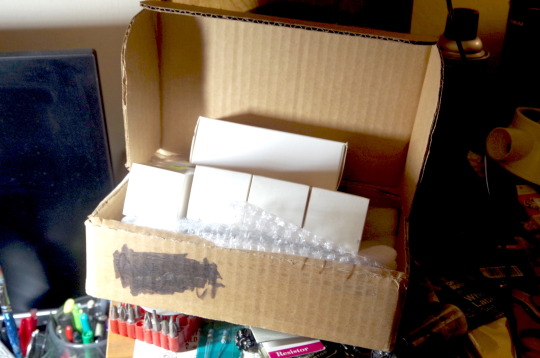
In the box were five tubes, all of them "good spares" I had personally pulled out of working ST70s I had. I'd de-tubed them before I sold them on eBay. They went to afore-mentioned friend who was going to use them in HIS Dynaco, but hadn't yet. He sent 'em back to me, four of the square-bottled Mullards (three of 'em original Dynaco-branded actual Mullards), and one "Winged C" (the Russian iteration), and a JJ as a spare. These had been in one of the systems I'd set up for ANOTHER of our buddies (my bestie who died in 2021). Old, but good, solid tubes with lots of life left in 'em.
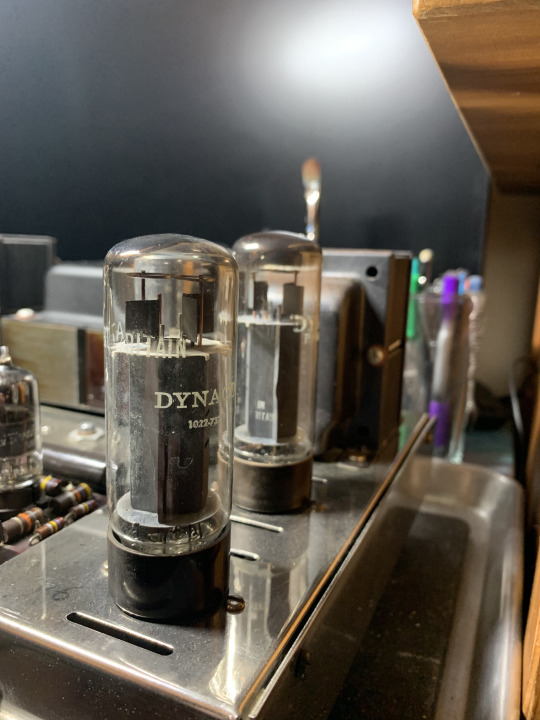
The 5AR4 I have is the original one. The silvering at the top is almost non-existent. It's a US-made Mullard clone:
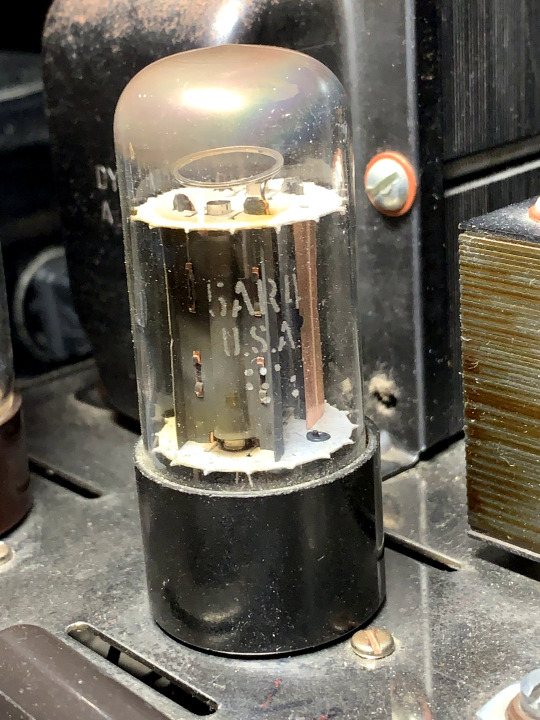
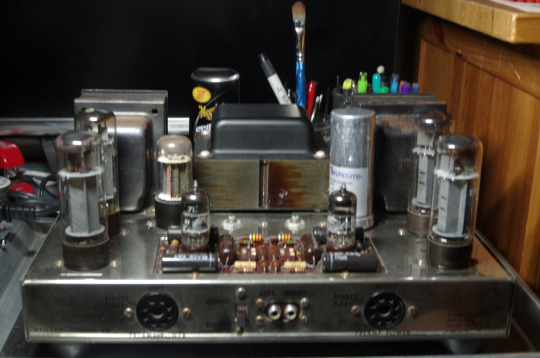
Gorgeous, ain't it?
SO...I got the ST70 ready for relaunch. Put it on the bench and hooked it up to my trusty old Micronta variac, set to "Zero Volts", got the fuse in, and switched it on.

Started out slowly turning it up to 10V, and waiting 15 minutes, and then turned it up another 10V to 20V, and waiting 15 more minutes, lather, rinse, repeat, until I got it up to about 117V.
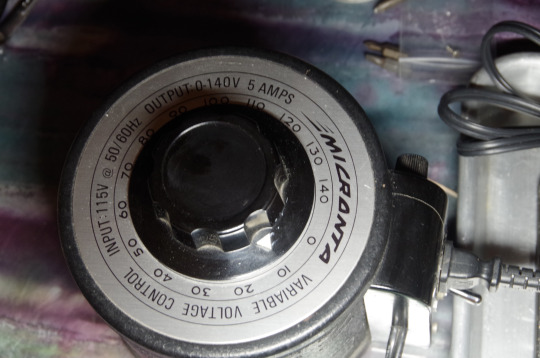
At about 40V I began to see the barest glow in all but one tube (that Winged C). At 50V, it began to glow as well. So far so good. After about an hour, I'd nursed it up to 70V, every tube glowing strong. I let it sit at 70V for about a half hour, and then just slowly turned the knob on the variac up to 117.
Every tube came up like a champ. The ST70 Glows once again!
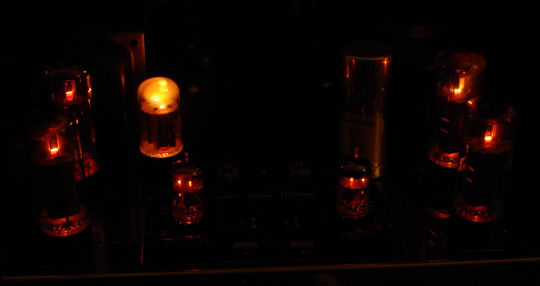
I let it sit and burn for about an hour, and checked the bias voltages. I had set the two adjustment pots to their center point. The left channel needed the slightest of increase (probably due to the Winged C) to get it up to the correct voltage, but the right channel was dead-set-centered on 1.56V. Boom. Rock solid. Done.
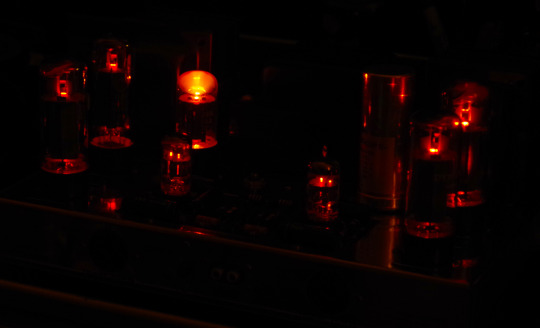
Now that the repairs are done, and I know everything is working, I will start tomorrow on re-connecting and re-arranging all the components in the system. I'm kinda spent at the moment...it's been quite a day! I'll post more tomorrow, but for tonight I call it a victory. All of the thanks go to my buddies @misfitwashere (who got me the parts) and our old compadre "Harbourmaster" on the East Coast, who sent the tubes.
More tomorrow, and to all a bitchin' Good Night.
Wednesday Night, 12-27-23
Well, it took awhile, but I finally got things re-wired and in position. Got the turntable and the FM3 hooked up and both work splendidly. I found a super-shielded RCA cable for the turntable specifically, and it sounds better...there's almost no need for the turntable ground wire now!
First, tho', I have to show off my speakers. These started their lives as Pioneer boxes, Model CS-44, to be exact. I got them at the thrift store for $25.

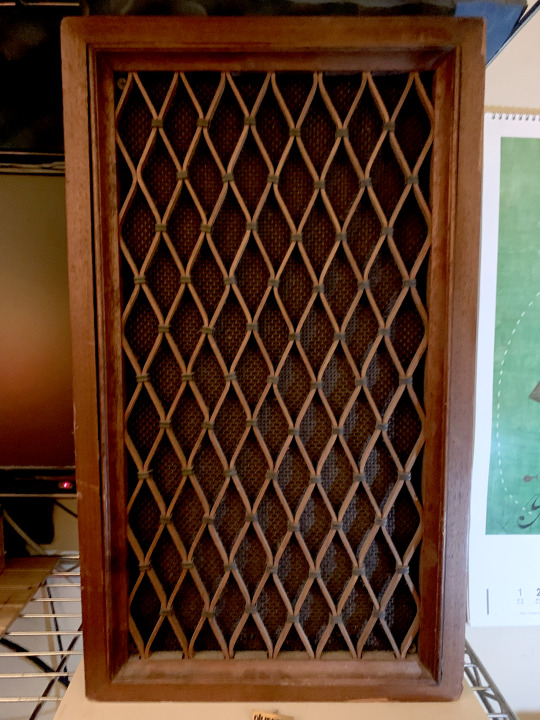
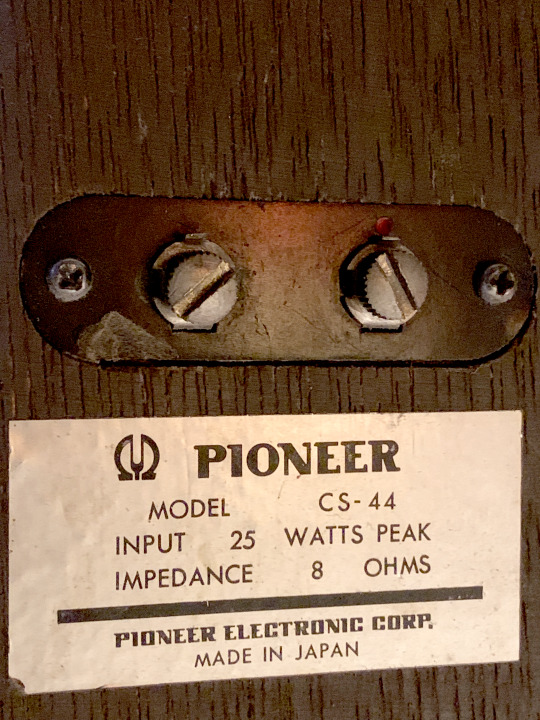
BUT: the 8-inch woofers and tweeters in them were garbage, so I replaced them with new components: A pair of 8" butyl-rubber surround, poly-cone woofers (they will never need reconing), and a pair of genuine Danish SEAS Tweeters, salvaged from a working pair of Dynaco A-25s.
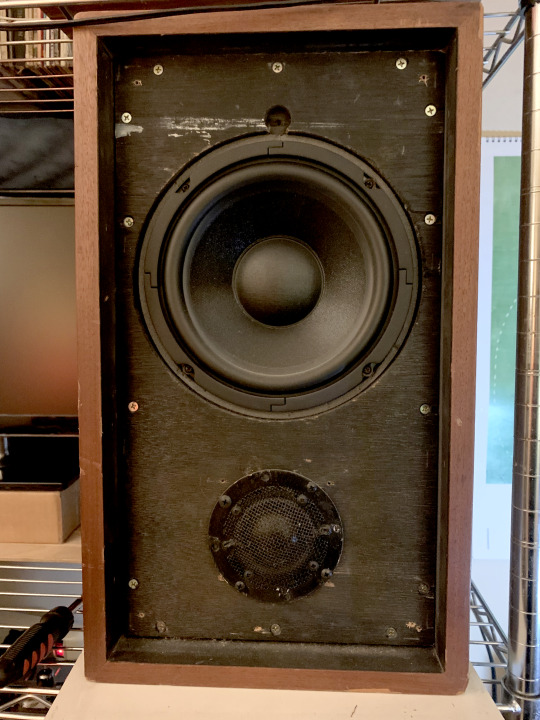
The result? The 8-Inch Dynaco Speaker That Never Was! The A-10s had 6-inch woofers, and all the others had 10-inch woofers.
And the sonic result? A pair of mid-sized bookshelf speakers with rock-solid bass and the clearest, most well-defined mids and highs you could ever want to hear! And they don't look bad, either!
Here is everything finally in place:


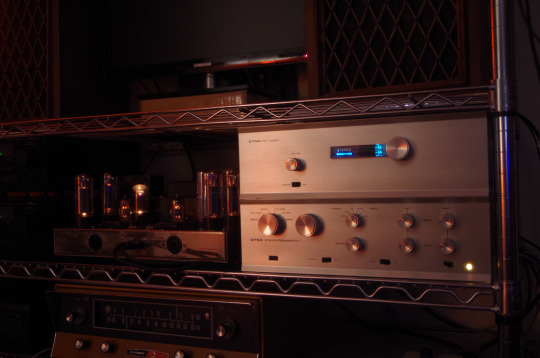


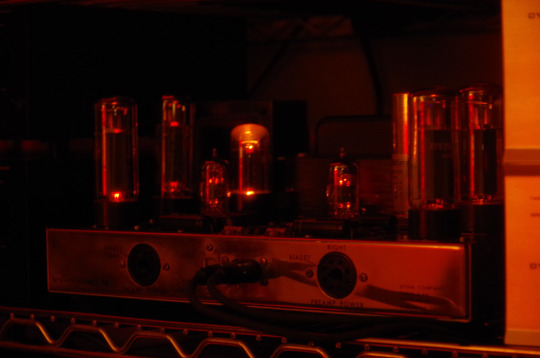
And that about wraps it up! I've finally got my music back. I'll finally be able to continue my vinyl transcribing, and won't have to worry about my equipment for another good long while.
Many thanks again to my bros @misfitwashere and Harbourmaster. I couldn't have gotten it accomplished without y'all's help.
21 notes
·
View notes
Text

Loopback testing made easy.
FiberLife offers Fiber Loopback Cables/Modules in LC, SC, and MTP/MPO connector styles, available in both singlemode and multimode options. Choose from simplex, duplex, or high-density multi-fiber modules (8/12/24 cores) to simulate a complete optical signal path for accurate validation. Perfect for verifying port functionality and troubleshooting fiber networks in data centers, telecom setups, and equipment production lines.
0 notes
Text
12 SC Cable
Global leading manufacturer and supplier offers SC/UPC to SC/UPC 12 fiber single mode (SM 9/125) patch cables. High quality, reliable fiber optic connections for your network.
1 note
·
View note
Text
FAN OUT CABLES
Understanding Fan-Out Cables: The Essential Connection for Fiber Optic Networks
In the world of fiber optics, ensuring that signals are transmitted efficiently across multiple channels is crucial for modern communication systems. One of the key components used to achieve this is fan-out cables. These specialized cables play an important role in splitting and distributing signals across various endpoints in fiber optic networks. Whether you're setting up a data center, upgrading your broadband infrastructure, or managing a complex telecommunications system, understanding fan-out cables and their uses can help you make the right decisions for your network.
In this blog, we’ll dive into what fan-out cables are, how they work, and why they’re an essential component in fiber optic communication systems.
What is a Fan-Out Cable?
A fan-out cable is a type of fiber optic cable that takes a single high-count fiber optic cable and separates it into multiple individual fibers. Essentially, it “fans out” the individual fibers from a single cable, allowing you to connect multiple devices or endpoints to a single trunk line. This type of cable is designed to help organize and manage fiber connections in complex setups where a single cable needs to be distributed to multiple locations.
Fan-out cables are often used in fiber optic patch panels, distribution frames, or splicing systems, helping reduce clutter, improve organization, and ensure smooth data transmission.
How Do Fan-Out Cables Work?
A typical fiber optic system involves a trunk cable (which can contain many fibers) that runs from a central location (like a switch or a server room) to various endpoints. However, each endpoint needs to be individually connected to the network, which is where fan-out cables come in.
A fan-out cable consists of a buffer tube that holds multiple fibers inside. The cable splits the fibers at the termination point, often converting a high-fiber count (like 12, 24, or more) into individual fibers for easier patching and connection.
Here's how they typically work:
Trunk Cable: A high-count fiber optic cable (like a 12-fiber or 24-fiber cable) comes into the fan-out cable.
Buffer Tubes: The individual fibers inside the trunk cable are grouped together in buffer tubes, which help protect the fibers.
Fan-Out: The cable splits, with each individual fiber being separated out for easier termination, allowing technicians to connect them to patch panels or other equipment as needed.
This “fan-out” effect helps maintain a clean and organized setup while also allowing flexibility in fiber network management.
Types of Fan-Out Cables
There are two primary types of fan-out cables based on their configuration and application:
Standard Fan-Out Cable:
This is a typical fan-out cable used to separate a high-count fiber optic cable into multiple individual fibers. Standard fan-out cables are used in patch panels, distribution frames, and other equipment where individual fibers need to be connected to specific locations.
Breakout Fan-Out Cable:
Breakout fan-out cables have individual fibers that are terminated with connectors (like LC, SC, or MTP connectors). These are often used when a single fiber needs to be quickly connected to network devices like routers, switches, or patch panels without the need for further splicing.
Breakout cables are typically used when you need to connect individual fibers directly to active network equipment, whereas standard fan-out cables are often used in environments where fiber terminations and connections need to be centralized and managed.
Key Benefits of Fan-Out Cables
Fan-out cables are designed to improve the efficiency and organization of fiber optic networks. Here are some of the main benefits of using fan-out cables:
1. Organization and Cleanliness
One of the biggest advantages of fan-out cables is their ability to help maintain a clean and organized network setup. In high-density fiber optic systems, managing large bundles of cables can become a mess without the proper tools. Fan-out cables split a high-count fiber bundle into smaller, more manageable units, allowing for easier identification and termination.
2. Simplified Network Management
By breaking out individual fibers, fan-out cables allow network technicians to easily manage, terminate, and test each fiber separately. This makes maintenance and troubleshooting much more straightforward and allows for a more flexible network infrastructure.
3. Flexible Connections
Fan-out cables provide flexibility in your fiber optic network, allowing multiple devices to connect to a single high-count fiber trunk. Whether you need to connect a few devices or many, fan-out cables make it easier to route signals and ensure high performance across the network.
4. Cost-Effective
While the initial investment in fiber optics can be expensive, fan-out cables help reduce the cost of upgrades and expansions. By allowing a single trunk cable to be split into multiple fibers, you can increase the capacity of your existing fiber optic infrastructure without needing to install new cables for each connection point.
5. Easy to Terminate
Fan-out cables make it much easier to terminate fiber optic connections. Technicians can focus on individual fibers rather than having to deal with a high-count trunk cable, leading to fewer mistakes during installation and faster setup times.
6. Reduced Signal Loss
By keeping the fibers in a manageable and well-organized system, fan-out cables help minimize the risks of signal degradation due to bending, kinks, or poor cable management. Good fiber cable management can maintain the integrity of the signal, ensuring the best possible network performance.
Applications of Fan-Out Cables
Fan-out cables are commonly used in various sectors that rely on fiber optic networks. Some key applications include:
Data Centers
Fan-out cables are used in data centers where large amounts of data need to be transmitted quickly and reliably. These cables help organize fiber connections and improve the efficiency of patching and reconfiguring fiber networks.
Telecommunications
In telecommunications networks, fan-out cables enable the distribution of fiber signals across different locations, ensuring reliable service to both residential and business customers.
Fiber-to-the-Home (FTTH)
FTTH networks use fan-out cables to distribute fiber optic signals from a central node to homes and businesses, providing high-speed internet, television, and phone services.
Campus Networks
Universities, hospitals, and corporate campuses often use fan-out cables to distribute fiber optic connections to multiple buildings or floors, creating a robust and scalable network.
Long-Distance Fiber Optic Networks
Fan-out cables are also employed in long-distance transmission systems, where a single trunk fiber optic cable needs to branch out into multiple separate fibers at various endpoints, such as relay stations or regional hubs.
Conclusion
Fan-out cables are an essential part of modern fiber optic networks, allowing for efficient and flexible distribution of high-bandwidth data across multiple endpoints. Whether you're building a data center, connecting remote locations, or upgrading your telecommunications infrastructure, fan-out cables provide a simple solution for improving cable management, maintaining high signal quality, and simplifying network expansion.
With the growing demand for high-speed internet and data transmission, fan-out cables are more important than ever in ensuring the smooth operation of fiber optic networks. By understanding their role and benefits, you can make better-informed decisions for your network setup, leading to improved performance and long-term scalability.
0 notes
Text
Price: [price_with_discount] (as of [price_update_date] - Details) [ad_1] Product Description Digital Camera 12 MP 1080P HD Video Recorder (Blue) High-Resolution Photos: Featuring a 12 MP camera, this device takes clear and vibrant photos, ideal for documenting all your child's special moments. 1080P HD Video Recording: Capable of recording high-definition videos, allowing your child to create their own movies and capture dynamic memories. 2.0" LCD Screen: The bright and clear 2.0-inch screen makes it easy for kids to frame their shots and review their photos and videos.Built-In Games: Includes fun and engaging games to keep kids entertained during downtime. These simple, age-appropriate games add extra enjoyment to the camera experience. Portable Design: Lightweight and compact, this camera is easy for kids to carry around. Its ergonomic design ensures a comfortable grip for small hands. Digital Camera 12 MP 1080P HD Video Recorder (Blue) Capture your child’s creativity and adventures with the Digital Camera. Key Features: Durable and Child-Friendly: Constructed from high-quality, non-toxic materials, this camera is built to withstand drops and rough handling, ensuring it lasts through all your child's adventures.Multi-Functionality: In addition to taking photos and recording videos, this camera can also be used as a computer webcam, making it versatile for various uses.Rechargeable Battery: Features a built-in rechargeable battery that provides hours of use on a single charge. Comes with a USB charging cable for convenient recharging.Easy to Use: Simple interface and intuitive buttons make it easy for kids to navigate and use all the camera’s features. 1.The body has a sleek design,Christmas for Best Gift Children Kids-Boys-Girls for taking photo and the grip is more comfortable to protect the child's tender hands. 2. Kids Camera with 1080P(1920x1080) HD video camcorder and 3.0 Mega Pixel, greatly improve the photos definition compared with other children cameras. 3. Our updated digital kids camera comes with more functions, photo capture, video recording, continuous shooting, playback, countdown photo, sticker photo, recording etc. The photo and video mode also have various scene selections and cute photo frame. Our kids recording camera max support 32GB micro SD card (Card is NOT included). It includes 5 puzzle games which also make this camera more interesting for your kid. 4. Toddler always have the dream of being a photographer, the kids camcorder use anti-drop soft silicone shell, with mini size, design easy operation, with a lanyard very suitable as a toys for 3 4 5 6 7 8 9 10 year old boys girls. this digital camera is the best gift for kids on birthday, Christmas and New Year. [ad_2]
0 notes
Text
FTTH SMC Fiber Distribution Box
FTTH BOX-SMC SERIES is an optical cable splicing device used to divide the trunk optical cable into multiple branch optical cables to realize the connection and crossover of the access optical cable and the exit optical cable.
Teruitong Product: T9-001-A SMC 12 Core Fiber Box
Item No: T9-001-A Description: For 12pcs SC Simplex Adaptor Size: 31024590mm Material: SMC

1 note
·
View note
Text
Comparison of LC and SC Fibre Optic Connectors
Many optical network applications, like cable TV and the internet, employ 12 SC Cable connections. Although it is technically a rectangle connector, the term refers to the form of the connector, which is square. The terms subscriber connection, stick-and-click connector, and standard connector may also be used in the name. The snap-in style of the SC connection makes it simple to join and…

View On WordPress
0 notes
Text
Unlock High-Speed Connectivity with QSFP+ Modules
In contemporary networks, QSFP+ (Quad Small Form-factor Pluggable Plus) modules are essential for attaining high-bandwidth data transfer. They are perfect for enterprise and data centre applications, supporting up to 40Gbps of data. QSFP+ modules from Fiber-MART offer reliable and seamless network performance.

#fiber amplifier#sfp+ cable#qsfp28#QSFP+#fiber trunk cable#optical isolator#SC Attenuator#12 LC cable#MPO to MPO#MTP to MTP
0 notes
Link
Check out this listing I just added to my Poshmark closet: New Data Cable SATA III 24" 6Gb/s w/Latch Silver SC-SATA3-24-LL-SL Serial ATA.
0 notes
Text




Fiber Optic Terminal Box OTB-P021-A
Features Material: ABS plastic 2 splice module, each 6 slots, max. 12 fibers Max. 12pcs SC simplex adapter ports Support cable entry without cutting 2pcs port for max. 12mm cable + 8pcs port for max. 8mm cable entry Wall mounting and pole mounting application Waterproof, outdoor using, IP65
0 notes
Text
I agree with a lot of this, but also want to add that shorter seasons are not always better for crews, either. I have 3 produced episodes of Network TV and 1 unproduced cable ep for a show written off for taxes. The 22-23 episode seasons that were my network show were tough, for sure, but the budgets were there for 2 1st and 2nd AD teams, rotating DPs, writers on set for each episode, and 3 rotating editors with AEs working on one episode at a time. The other show was 6 episodes, had no writers on set besides me and the showrunner (I was there to train, I'm a script coordinator), and we had 1 DP for all episodes (she was forced to prep concurrently with shoot), 2 ads sharing 1 second ad, which forced the middle block AD to rely on me more than he should have had to and do all the work of a 2nd at the same time as his job (which is terrible bc ADs are already some of the most stressed and have the shortest life expectancy of all crew). A lot of this is, as you say, management, but yeah, my experience sucked on 6 eps but was pretty good on 22. The shooting schedules did not get longer for shorter seasons, still 10-12+ hour days with 7-9 shoot days, but the length of time a person is employed did shorten. At least for me as support staff the shorter seasons really suck. But, that's just my experience, and isn't really an argument against yours, and I am really hoping the new contract helps this part as well. However, seeing a lot of "WRA/SC combined" roles so IDK, I had to work a SRA/SC dual role and it burnt me out so I hope more showrunners stop abusing their support staff too. We'll see. Plus the 13 episode series I was on compared to the 22 episode, we started writing the 22 episode one months before production started, so we had written eps long before they shot. The 13 ep one had just as much time, but we would be at studio/network draft on day 2 of prep for that ep. SOOOO much of the shit for crews is up to how the showrunner manages versus the number of episodes.
downsizing seasons from 22 episodes to 13 to 8. describing miniseries as "8 hour movies". loudly declaring that shows with 20+ episodes per season cannot truly be good. complaining that "it couldve been a movie". complaining about filler episodes. complaining about bottle episodes. complaining about episodes that prioritize character over plot. fr i think y'all just dont like television
43K notes
·
View notes
Text
Easy Knitting and Crocheting Patterns for Hand Dyed Yarns

Hand dyed yarns are a beauty. It is an art to dye yarns by hand and that yarn becomes the star of the show of many knitting and crochet projects. Used to create anything from cozy sweaters and scarves to stylish hats and mittens, the yarns work for all knitters and crocheters. Beginners may feel overwhelmed with the yarn but there are no special tricks for working with it. You simply have to treat your yarn right by maintaining a uniform tension, follow the blocking instructions and you will have the yarns that work wonderfully for you for beautiful projects.
Hand-dyed yarns for knitting or crocheting are special as every skein is unique. Whether you knit or crochet you work with these yarns. The dyeing process done by hand means that no two skeins will ever be exactly alike and will be truly personalized. Also, when the yarn itself is the star of the show, simple stitch patterns, such as stockinette or garter and single crochet (SC) or even half double crochet (HDC) are ideal for showcasing the colors and textures of the yarn. But even if you want to explore more challenging designs, it’s best to follow a pattern that best brings out the beauty of yarn.
Here are some ideas for what to knit with hand-dyed yarns:
Shawls and wraps
Hand-dyed yarns can create stunning shawls and wraps with various colors and textures. Whether you knit or crochet, you showcase the yarn, or you can choose more intricate lace or cable patterns for added interest. There are many patterns out there for projects but you can easily plan one too. You can easily work on any pattern with any pair of single-pointed knitting needles or circulars. A single-ended crochet hook or even an interchangeable Tunisian crochet hook can be used for the project. You don’t have to stick to a square or rectangle one but work on asymmetrical designs or triangles.
Hats
Hand-dyed yarns can add a pop of color to any project whether it’s a garment or accessories. Hats are both functional and decorative. You can make them with any pair of single-pointed needles seam them together or work a seamless design on circulars. Similarly, you can crochet one. You can begin with the magic circle or start to work from the brim. Whether you work with semi-solid or variegated shades, you can create a masterpiece.

Sweaters and cardigans
Sweaters and cardigans are the perfect chance to showcase a yarn, a pattern and practice some skills. Choose a simple pattern like a top-down raglan or a basic cardigan to showcase the yarn, or add some texture with cables or lace. You can knit or crochet a seamless design or work the pattern in pieces and later assemble it. One skein may not be enough for your project so you can choose two or more and fall in you with your knitting yarn.
Socks
Socks are wonderful gifts for every season. Hand-dyed yarns can create stunning socks with a range of colors and patterns. With an extrafine merino variant such as Terra, you will get to have the perfect combination of beauty and brawn. Choose a simple pattern like a basic sock or add some texture with cables or lace. Beginners as well as advanced knitters can knit a pair in days at the most. While it is perfect to crochet socks, knitting one is more appropriate. Choose 2mm or 3mm double-pointed needles or a circular needle in 9-inch or 12-inch lengths. With circular needles of 32 to 40 inches length, you can try the magic loop technique. Knitting two socks at a time with two circular needles is an advanced method to complete your task quickly.
Overall, hand-dyed yarns can add a unique and beautiful touch to any knitting project. Choose a pattern that showcases the yarn and enjoy the process of creating a beautiful and one-of-a-kind piece. The most important thing to do is enjoy the feel of the yarn. The appropriate knitting needles and crochet hooks make your crafting journey smooth and comfortable.
#yarn#knitting#hand dyed yarn#symfonieyarns#crochet#merino wool yarn#merino wool#crochet yarn#yarns#symfonie yarns
1 note
·
View note